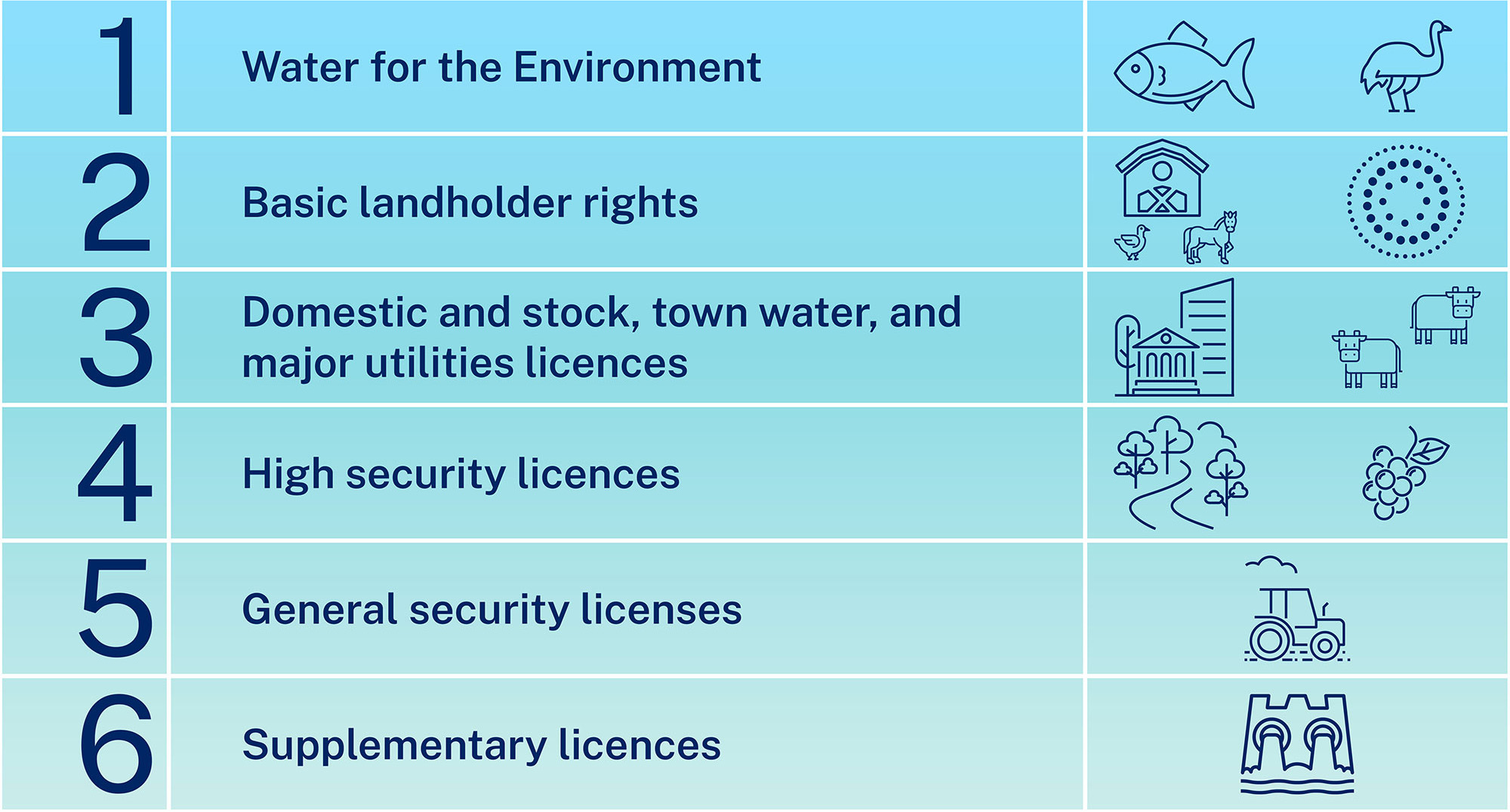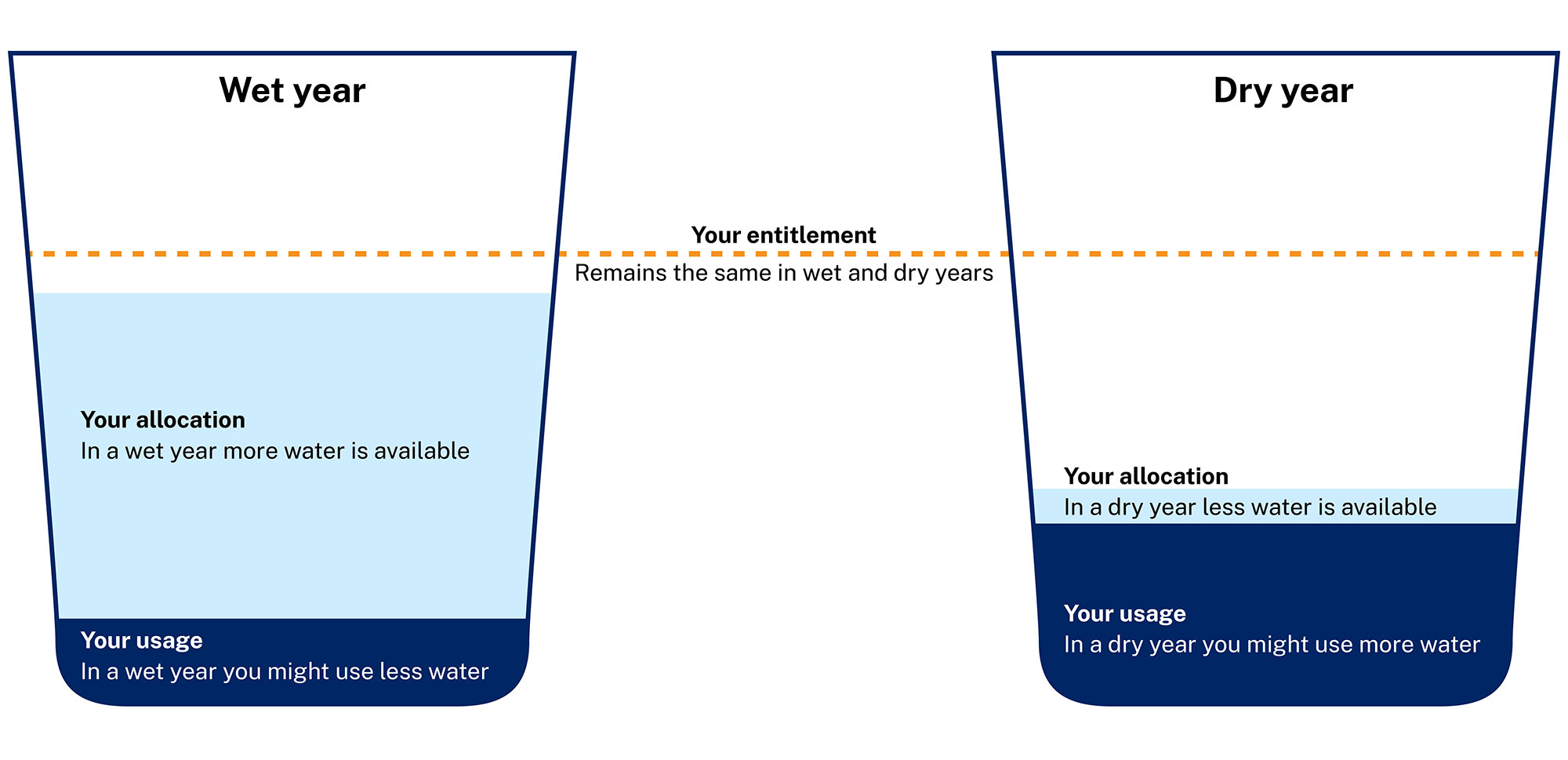What is a water allocation?
A water allocation or available water determination (AWD) is the amount of water a water user with a water access licence is allocated against their licence in a water year.
In most cases, a water user needs a water access licence to be allowed to take water from a river, lake, aquifer, or other water source. This water licence gives the water user a share in the local water source.
A share is usually equal to one megalitre, or one million litres. The number of shares on a licence sets the maximum amount of water the licence owner can take when they get a full allocation.
Each year, the department allocates water to water users based on how much water is available. Each water user will receive a water allocation, which is expressed as a percentage of the amount of water held on their licence. That allocation determines how much water they can take.
How is water allocated?
How is water in NSW allocated?
When determining how much water will be allocated to water users in NSW, there are number of considerations taken into account.
Why do we need water allocations?
Water is a limited resource. There is usually not enough fresh water available for all the purposes that people and the environment need or want to use it for. We also can’t desalinate enough sea water to meet all these different needs.
The NSW Government set out a priority order for different water uses in the Water Management Act 2000. The licence types at the top of the list are allocated water before the licence types lower on the list. This ensures that we have enough water for the most critical uses, before allocating any extra water for other purposes.
The main licence categories, in order of priority are:
- domestic and stock
- town water supply
- high security
- conveyance
- general security
The priority changes in very dry periods.

What affects water allocations?
The department allocates water against licences each year based on the priority of the licence, the amount of water in dams in rivers, and the amount of water we expect to come into dams during the year. The department also factors in water trades, water ‘carried over’ from the previous years, water losses from ‘running’ the river, and water already allocated under water sharing plan rules, to work out how much water is available and can be allocated to licences.
Higher priority licences like domestic and stock or town water licences tend to get higher allocations. Lower priority licences like general security licences may get lower allocations, particularly in dry times.
Allocations change depending on how wet or dry the year is. For example, in wet years crops are watered directly through rainfall meaning less water is used for irrigation. In a dry year with less rainfall, water from the river may need to be used to water crops.
You might like to think about this using a bucket metaphor. In each water source, there’s only so many buckets of water (shares). Having a water licence is like owning some of those buckets, while the water allocation is the amount of water in the bucket. In drier years, there’s less water, so less water ends up in each bucket.

When will I know my allocation?
The department issues an opening allocation for all licence holders at the start of each new water year on 1 July. This may be anywhere between zero and 100% of the full licensed amount.
If a licence holder gets less than 100% of entitlement, they may be allocated more water over the course of the year as more water becomes available. For most licence categories, if they get 100% entitlement, there is no increase for the rest of the water year.
How is the department responsible?
The department is responsible for allocating water based on the priorities set out in legislation and the rules set out in water sharing plans, based on how much water is available.
The department also works with the community to develop water sharing plans, which determine how much water we can safely extract over the long-term. The plans also look at how much water needs to be set aside for the environment.
Find out more about the rules for sharing surface and groundwater and what licensed water users are allowed to take.
